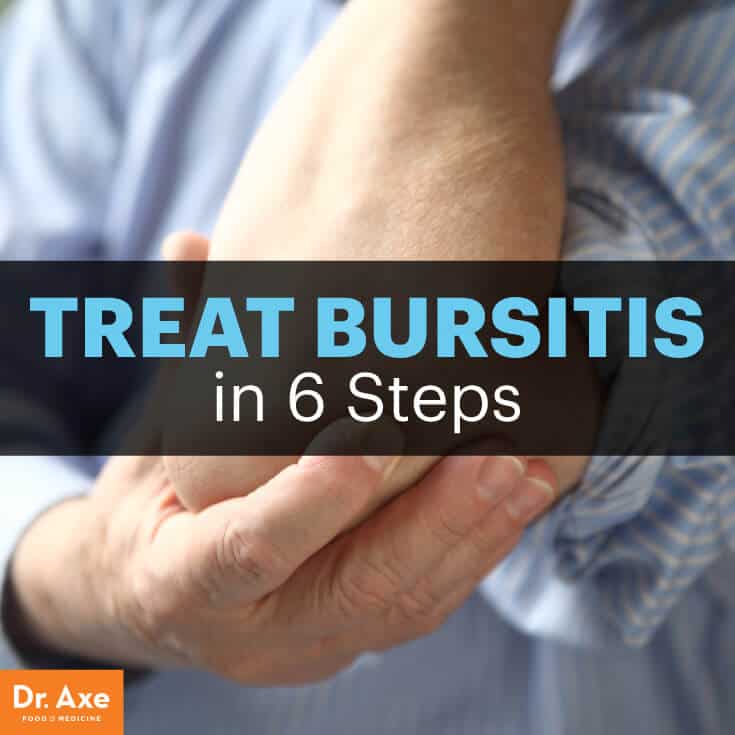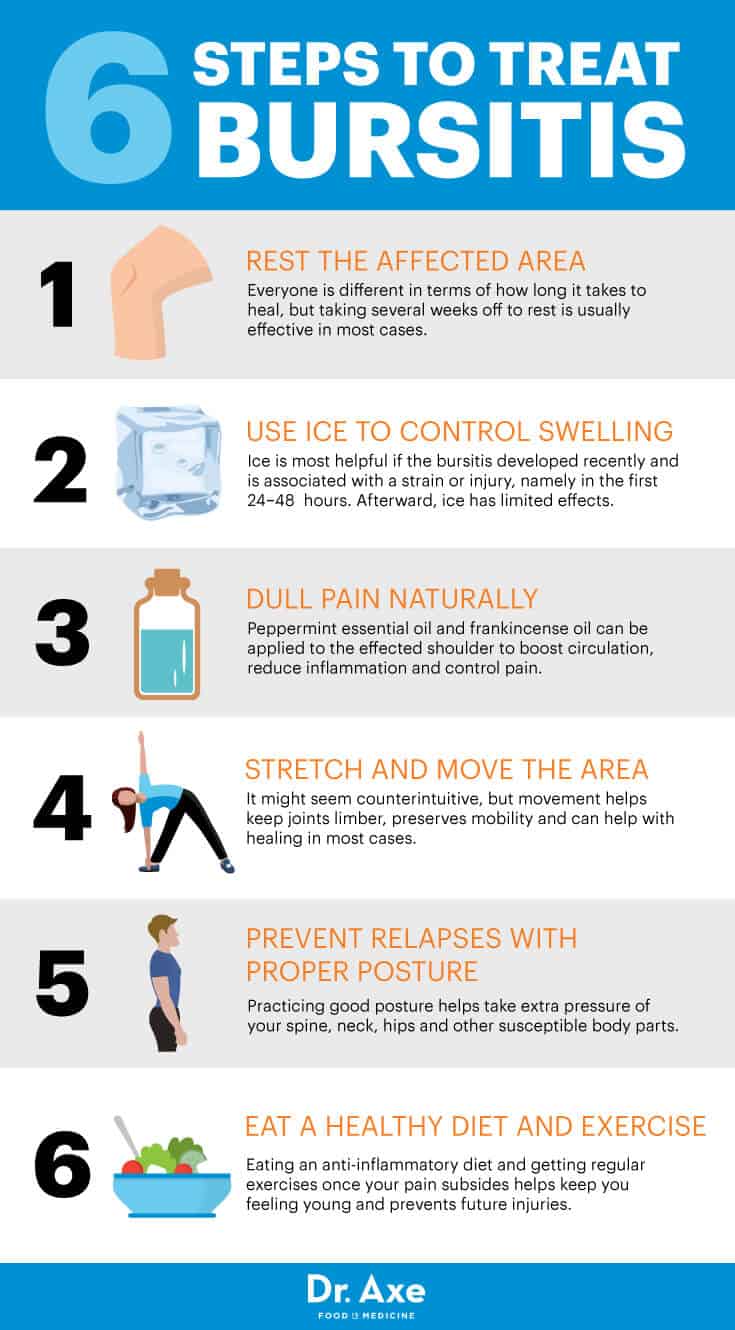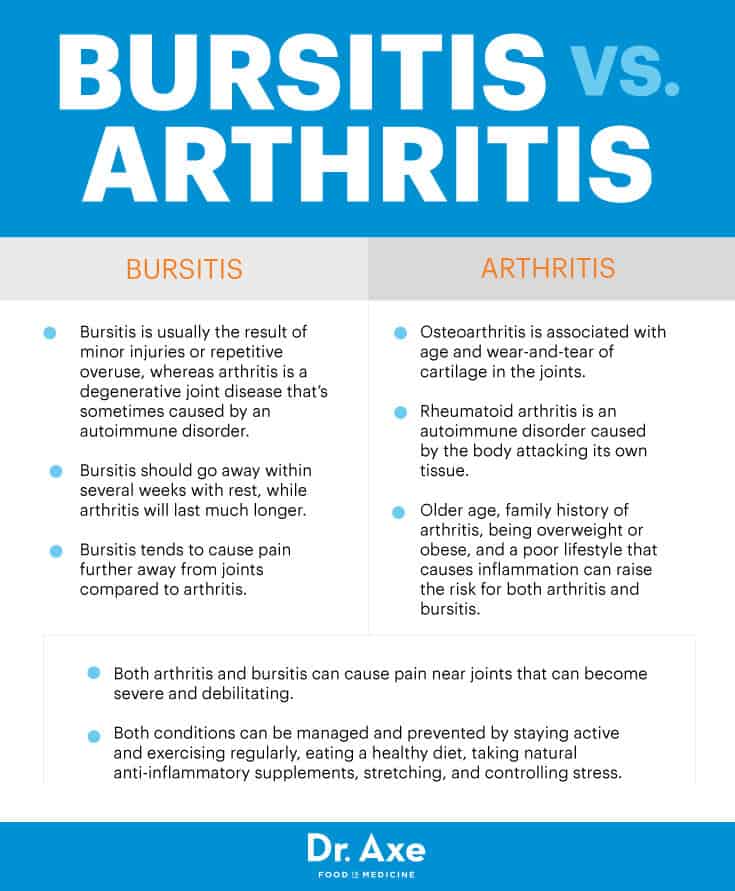This Dr. Axe content is medically reviewed or fact checked to ensure factually accurate information.
With strict editorial sourcing guidelines, we only link to academic research institutions, reputable media sites and, when research is available, medically peer-reviewed studies. Note that the numbers in parentheses (1, 2, etc.) are clickable links to these studies.
The information in our articles is NOT intended to replace a one-on-one relationship with a qualified health care professional and is not intended as medical advice.
This article is based on scientific evidence, written by experts and fact checked by our trained editorial staff. Note that the numbers in parentheses (1, 2, etc.) are clickable links to medically peer-reviewed studies.
Our team includes licensed nutritionists and dietitians, certified health education specialists, as well as certified strength and conditioning specialists, personal trainers and corrective exercise specialists. Our team aims to be not only thorough with its research, but also objective and unbiased.
The information in our articles is NOT intended to replace a one-on-one relationship with a qualified health care professional and is not intended as medical advice.
The 6-Step Natural Approach to Treating Bursitis
May 5, 2016

What you may think is just creaky bones or even arthritis could actually be this uncomfortable condition instead. I’m talking about bursitis, a disorder that can make everyday activities seem like a chore.
This condition causes uncomfortable joint, bone and muscle pains, most often in the knees, shoulders, elbows and hips. Bursitis pain is caused when “bursae” — the fluid-filled sacs that are found next to joints and between bones — become irritated and inflamed, especially when someone moves in repetitive ways or gets injured. It’s more common in women and in middle-aged or older adults, especially if they have a history of injuries or have had surgery near the painful area. (1)
Never heard of bursa before? Bursae, which are found throughout the entire body, might be small, but they have the very important role of cushioning and lubricating the spaces between bones, connective tissue (joints, tendons and ligaments) and muscles. When bursae stop functioning properly, it becomes hard for us to move normally and withstand friction or pressure. The National Institute of Arthritis and Musculoskeletal and Skin Diseases reports that people who perform repetitive movements often — like carpenters, gardeners, musicians and athletes — get bursitis (or other related conditions like tendonitis) most often. (2)
If you’re older, have a history of other trauma or joint problems, or if you exercise and work in a way that requires repetitive movements (like carpentry, landscaping or playing particular sports, for example), you’re more likely to develop bursitis. Treatment for bursitis involves resting the affected area, taking time off from certain aggravating exercises or activities, stretching, and reducing inflammation. The good news is that with proper care, bursitis pain usually goes away within several weeks without the need for medications or surgery. A 2011 article published in the Journal of the American Academy of Orthopedic Surgeons reports that “most bursitis patients respond well to nonsurgical management, including ice, activity modification, and nonsteroidal anti-inflammatory drugs” (NSAIDs). (3)
Natural Bursitis Treatment & Relapse Prevention
If you think you might have bursitis, it’s a good idea to visit your doctor (or a rheumatologist who specializes in joint disorders) in order to rule out other causes for your pain. Symptoms of bursitis can be similar to those caused by arthritis, diabetic neuropathy, frozen shoulder, tendonitis, gout and many other conditions. Your doctor can confirm that it’s bursitis causing your symptoms by performing a physical exam, pressing on various swollen spots around your affected joints, possibly taking X-rays, and speaking to you about your hobbies, work, medical history, and any recent injuries or falls.
Once you know that you have bursitis and not another more serious condition, in most cases you’re able to treat the painful symptoms and underlying causes naturally and pretty easily. Your doctor might prescribe painkillers, NSAIDs (such as ibuprofen or naproxen) or even corticosteroid injections and antibiotics if pain has become very bad or is caused by an infection. But chances are that resting and using these natural pain-reducing tips will help resolve the problem on its own.
1. Rest the Affected Area
Give the affected area time to heal and a chance for inflammation to decrease by taking a break from any repetitive exercises or movements that add stress and pressure. Everyone is different in terms of how long it takes to heal, but taking several weeks off to rest is usually effective in most cases.
You can continue to stretch the painful area if it feels OK to do so (you should feel slight tension but not intense pain) and can keep up with other everyday activities that don’t cause pain, such as walking, but otherwise take it easy. Long term, make sure you properly rest between workouts and avoid overtraining. You can also consider asking your doctor about using an assistive device temporarily to help keep you moving — such as a walking cane, crutch, splint or brace — to help relieve pressure wherever it hurts.
2. Use Ice to Control Swelling
There are several primary ways to help reduce swelling associated with bursitis and therefore to lower pain. Aside from resting the troubled area, you can tightly wrap the area, elevate it to reduce blood flow and swelling, and use ice packs. Ice is most helpful if the bursitis developed recently and is associated with a strain or injury. The first 24–48 hours after the injury or flare-up are considered a critical healing period when ice is very beneficial. (4) Long term, however, you likely won’t find much relief from icing bursitis that developed a long time ago.
To use ice to lower bursitis swelling, take an ice pack wrapped in a thin towel (or even a pack of frozen veggies/fruit) and hold it on the affected area for 15 to 20 minutes every four to six hours. Do this for three to five days in a row along with stretching for the best results.
3. Dull Pain Naturally
Taking an over-the-counter painkiller (like ibuprofen or Advil) can temporarily help reduce bursitis pain and discomfort, but if you rely on these for days on end you might start experiencing ibuprofen overdose reactions or side effects. Homemade treatments, such as muscle/joint rubs made using natural essential oils, can reduce swelling without the need to take any drugs.
Peppermint oil and frankincense oil can be applied to the affected shoulder to boost circulation, reduce inflammation and control pain. These can also be used during massage therapy, applied before or after stretching, and added to a bath.

4. Make Sure to Stretch and Move the Area
It might seem counterintuitive, but movement helps keep joints limber, preserves mobility and can help with healing in most cases. Initially, it’s a good idea to let your bursitis pain subside a bit, but ultimately you want to stay active to reduce stiffness, pain and inflammation once you’re able to get moving again.
According to the American Academy of Orthopedic Surgeons, gently stretching and exercising the area on your own, or being guided by a physical therapist, can help speed up healing time. This is especially true when combined with other bursitis treatments like rolling therapy, massage therapy, icing, heating and using essential oil rubs. (5)
Stretching, strengthening and frequently exercising susceptible muscles and joints is an important anti-aging practice and helps prevent disabilities, complications and recurrence of bursitis as you get older. Work on regularly doing strengthening exercises for your core, lower back and legs. Always make sure to warm up and stretch before exercising, ideally first by heating any areas prone to pain (such as using a heating pack or taking a warm shower). Your doctor might recommend you meet with a physical therapist for help with starting a proper stretching and exercise regimen that will slowly strengthen the muscles in the affected area and prevent recurrence.
5. Prevent Relapses with Proper Posture
Poor posture when exercising, standing, sleeping, sitting at work or driving can cause extra wear and tear on bursae and joints and cause painful strains. Practicing good posture helps take extra pressure of your spine, neck, hips and other susceptible body parts.
To make sure your posture isn’t contributing to pain, try focusing on these tips: Make sure to keep your center of gravity over your hips (not tilting forward or back, which can lead to forward head posture), support the spine by standing and sitting upright, practice proper alignment when exercising and stretching, keep your abdominal muscles pulled in tight during the day, strengthen your core with ab exercises, and try alternating positions often at work.
First and foremost, work on practicing good posture while you’re standing upright and sitting down at work (this is especially important if you sit at a desk for many hours a day). Consider positioning your body properly when doing daily tasks by using an ergonomic chair, or work with a chiropractor who can give you targeted chiropractic adjustments if you think that poor posture might be contributing to your bursitis pain.
6. Reduce Inflammation through a Healthy Diet and Exercise
Eating an anti-inflammatory diet and getting regular exercises once your pain subsides help keep you feeling young and prevent future injuries. General dietary tips for lowering or preventing inflammation include: consuming all sorts of fresh veggies and fruit, probiotic foods (yogurt, kombucha, kefir and cultured veggies), grass-fed beef, wild-caught fish, cage-free eggs, and healthy fats like nuts, seeds, avocado, coconut and olive oil. Try to also limit other factors that can contribute to inflammation, such as high levels of mental stress, being overweight or obese, sitting for long periods, cigarette smoking, chemical or toxin exposure, and high amounts of exposure to vibration from vehicles.
The bursa sac is filled with a slick, viscous liquid called synovial fluid that is pushed through the body with movement. This helps keep the joints lubricated and the body flexible. (6) The National Institute of Health recommends also implementing some of these fitness/exercise tips to keep inflammation levels low near susceptible joints:
- Take 10 minutes to warm up and stretch before exercise.
- Use resistance bands or weights to help strengthen the muscles around the joint.
- Don’t sit for very long periods of time; take breaks to stand up and move around.
- Take frequent breaks from repetitive tasks or activities to stretch.
- When sleeping, reduce pressure on joints by using a cushion or pillow (such as between your knees).
- Protect your knees and elbows with pads when doing certain contact sports.
- When working with your hands, playing tennis or golfing, try to increase the gripping surface on tools by using gloves, grip tape or padding.
- Begin new activities or exercises slowly and with proper form, perhaps considering hiring a trainer at first to help guide you.
Bursitis vs. Arthritis: How Are They Different & the Same?
The American College of Rheumatology defines bursitis as “the degeneration (breakdown) of the soft tissue around muscles and bones.” (7) This is very similar to what occurs with arthritis, although they happen for different reasons. Bursitis and similar conditions like tendonitis are usually the result of minor injuries or repetitive overuse, whereas arthritis is a degenerative joint disease that is sometimes caused by an autoimmune disorder.
The causes of arthritis depend on what type of arthritis someone has. Osteoarthritis is associated with age and wear and tear of cartilage in the joints, while rheumatoid arthritis is an autoimmune disorder caused by the body attacking its own tissue. Older age, a family history of arthritis, being overweight or obese, and a poor lifestyle that causes inflammation can raise the risk for both arthritis and bursitis. (8)
Both arthritis and bursitis can cause pain near joints that can become severe and debilitating, but bursitis should go away within several weeks with rest, while arthritis lasts much longer. Bursitis also tends to cause pain further away from joints compared to arthritis, such as in nearby muscles or bones.
Pain caused by both conditions can be managed in similar ways, especially since movement usually makes symptoms worse at first. Long term, both conditions can be managed and prevented by staying active and exercising regularly, eating a healthy diet, taking natural anti-inflammatory supplements, stretching, and controlling stress.
Symptoms of Bursitis
Most cases of bursitis last for few weeks to several months, although it’s possible for untreated bursitis to persist for even longer. Once bursitis symptoms decrease, it’s still important to continue taking care of the affected area in order to prevent flare-ups and symptoms from returning.
The most common symptoms of bursitis include: (9)
- joint pain and tenderness in the hips, knees, shoulders, elbows, wrists or heels
- discomfort in certan muscles and bones
- trouble doing everyday activities like getting dressed, showering, carrying objects, walking or exercising
- difficulty sleeping well due to pain and discomfort
- feeling very achy or stiff
- looking swollen, red or “puffy” in the affected area
- tenderness when you press or put pressure on the affected area
Most bursitis symptoms don’t become very severe or dangerous, but it’s possible for certain people’s bursitis to progress to the point of causing complications. If you have intense pain for more than two to three weeks or any of these symptoms described below, talk to your doctor right away, since these can be signs of excessive inflammation around the bones or joints:
- very disabiling joint pain that leaves you unable to move
- a high amount of swelling, redness, heat, bruising or a rash in the affected area
- very sudden and sharp, shooting pains
- a fever
- loss of appetite, dizziness and fatigue

What Causes Bursitis?
The most common causes of bursitis are repetitive movements and minor injuries or impacts. As you get older, your chances of experiencing bursitis increase, since age naturally causes wear and tear on joints and loss of connective tissue. As tissues, including those in the joints, ligaments and tendons, age they become less flexible and strong, therefore they’re unable to handle impact, stress or pressure as well. (10) Women tend to develop bursitis more often than men, which researchers believe is due to hormonal influences and stress, which can impact the health of connective tissue.
Bursa become irritated over time due to age and a number of other reasons and can wind up producing too much lubricating fluid. This makes the bursa swell up and start to impede on adjacent body parts, including nearby joints and muscles. As the bursae grow in size, they put pressure on whatever is nearby, causing pain, throbbing and loss of mobility.
Some of the reasons you might develop bursitis include: (11)
- sports or work-related injuries and trauma
- being in an accident (such as a car accident or falling) that impacts a susceptible area of the body
- healing from surgery
- sudden movements that pull or strain muscles and joints
- overtraining or overuse of certain body parts, especially with improper form
- poor posture, especially if sitting for long periods of time
- having other inflammatory conditions that affect joints, including arthritis/rheumatoid arthritis, scoliosis, gout, infections, thyroid disorders, psoriasis or an autoimmune disorder
- having bone spurs or calcium deposits
- having “leg-length inequality,” when one leg is significantly shorter than the other
- partaking in “high-risk activities” that commonly trigger bursitis, including gardening, raking, carpentry, shoveling, painting, scrubbing, tennis, golf, skiing, throwing and pitching (12)
The specific ways you might have developed bursitis in different body parts include:
- Hip bursitis (also called trochanteric bursitis, which affects the outside point of the hip known as the greater trochanter): bending over, cleaning for long periods, over-exercising (such as running or cycling), climbing stairs, working out with improper form, sitting for long periods of time, straining yourself when getting up from a chair or car. (13) It’s also possible to suffer from iliopsoas bursa, which affects the inside of the hip near the groin, which is normally triggered from similar activities.
- Knee bursitis (also called prepatellar bursitis, which affects the area in front of the kneecaps): kneeling over often, cleaning like scrubbing floors, bending to pick up objects, gardening, running
- Elbow bursitis (also called olecranon bursitis): doing exercises where you lean on your elbows for long periods, playing an instrument, throwing a baseball often, golf, tennis, carpentry or lifting something over your head repeatedly
- Shoulder bursitis: exercising with poor form, lifting heavy objects, golfing, tennis, baseball or basketball, or due to work-related movements.
Bursitis Takeaways
Bursitis pain is caused when “bursae” — the fluid-filled sacs that are found next to joints and between bones — become irritated and inflamed, especially when someone moves in repetitive ways or gets injured.
If you’re older, have a history of other trauma or joint problems, or if you exercise and work in a way that requires repetitive movements (like carpentry, landscaping or playing particular sports, for example), you’re more likely to develop bursitis.
Most cases of bursitis last for few weeks to several months, although it’s possible for untreated bursitis to persist for even longer. Once bursitis symptoms decrease, it’s still important to continue taking care of the affected area in order to prevent flare-ups and symptoms from returning.
The good news is that with proper care, bursitis pain usually goes away within several weeks without the need for medications or surgery.
The best ways to naturally treat this condition is to rest the affected area, use ice to control swelling, dull the pain naturally, stretch and move the area, prevent relapses with proper posture, and eat a healthy diet and exercise.



